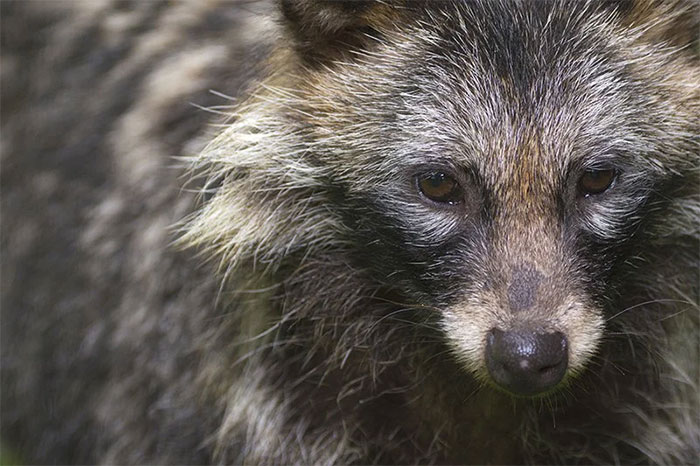New studies reinforce the hypothesis that nCoV originated from animals and transmitted to humans in late 2019. The epicenter of the outbreak continues to be the Huanan Seafood Wholesale Market in Wuhan, China.
According to CNN, these three studies were published on scientific data platforms on February 26 before being announced in specialized journals. The authors highlight evidence that nCoV originated from animals and jumped to humans due to wildlife trade in the Huanan Seafood Market in Wuhan, China. They also dismiss the notion that nCoV was cultivated in a laboratory.
Strengthening Evidence of nCoV’s Animal Origin
Two studies conducted by a team of experts from the University of Arizona, USA, used spatial analysis to indicate that the earliest Covid-19 cases appeared in December 2019. Samples from the environment were closely linked to wildlife vendors at the Huanan Seafood Market in Wuhan, China.
Through these two studies, the expert team also opposed the laboratory origin theory of nCoV, asserting that there is no evidence of the virus leaking from there.
Professor Michael Worobey, Chair of the Department of Ecology and Evolutionary Biology at the University of Arizona and author of these works, noted that these results provide strong, groundbreaking evidence showing that the origin of the Covid-19 pandemic is related to animals or originated from animals themselves. He described these findings as “more than reasonable” regarding the origin of nCoV.
“When you consider all the evidence together, it paints a clear picture leading to the conclusion that the pandemic began at the Huanan Seafood Market,” the expert asserted.

Members of the Wuhan Emergency Hygiene Response Team leave the Huanan Seafood Market after it closed on January 11, 2020. (Photo: Noel Celis/AFP)
Meanwhile, epidemiologist Dr. Thea Fischer from the University of Copenhagen, Denmark, who was not involved in the studies, evaluated these findings as “very convincing.” According to the NY Times, he believes the question of whether the virus transmitted from animals to humans has been resolved with solid evidence.
Professor Worobey described the initial spread model of nCoV as similar to a fireworks display. The initial outbreak occurred in late 2019. However, by early January to February 2020, the model changed entirely, indicating that a type of virus had “entered local communities.”
The study states: “In December 2019, Covid-19 cases unexpectedly concentrated around the market at the Huanan Seafood Market, regardless of whether they were vendors in the market, had visited there, or were connected to the area. Some cases epidemiologically linked to the market were located to the west, the area where most of the wildlife stalls were concentrated.”
When examining surfaces at the market for nCoV genetic material, one stall showed many positive clues, including a cage that a researcher previously discovered to have housed masked palm civets.

Protective gear-clad staff disinfect the Huanan Seafood Market on March 4, 2020. (Photo: Reuters).
The Hypothesis of Two Distinct nCoV Strains Transmitting from Animals to Humans
In the remaining study, a team of experts from the China Centers for Disease Control and Prevention (CDC) discovered the SARS-CoV-2 gene pool before February 2020, consisting of two evolutionary branches of the virus—designated as A and B. These branches resulted from at least two cross-species transmission events from animals to humans.
This research was conducted two years ago, but the CDC team only recently announced the results.
The first transmission from animals to humans may involve virus strain B, occurring in late November to early December 2019. Meanwhile, the emergence of strain A may have occurred a few weeks after the first event.
These findings clarify the timeframe between when nCoV first entered the human body and when the first Covid-19 cases were reported. The expert group noted that similar to SARS-CoV-1 in 2002-2003, the emergence of SARS-CoV-2 may also result from multiple transmission events from animals to humans.
The key point is that two corona strains jumped from two different animal species to humans. This could have occurred around November 2019.
Dr. Worobey and colleagues analyzed 800 Covid-19 samples from the early stage of the pandemic. They found that both strains A and B underwent their own growth surges. The expert group believes the most plausible explanation is that both strains independently transmitted from different animal species to humans.
Notably, both transmission events could have occurred at the Huanan Seafood Market. Dr. Worobey and colleagues identified the earliest Covid-19 cases of strain A related to individuals living near the market. Meanwhile, the CDC study revealed that strain A was found on a glove collected at this market.

Researchers speculate that masked palm civets may be the intermediary hosts for nCoV from animals to humans. The image shows a masked palm civet that was sold at the Huanan Seafood Market in Wuhan, China. (Photo: Edwin Giesbers).
These findings surprised the scientific community. In the early days of the pandemic in China, Covid-19 cases were only found to be related to virus strain B. Since it seemed to develop after strain A, some researchers suggested that nCoV only appeared at the market after spreading somewhere around Wuhan.
However, this logic has been overturned. This discovery aligns with the scenario proposed by Dr. Worobey and colleagues, indicating at least two events that allowed nCoV to jump from animals to humans.
The author group notes that the initial timeframe may include more virus variants, but most could not survive in humans; only nCoV achieved that. Additionally, when considering reports of nCoV infections in animals such as cats, deer, and hamsters, researchers noted that “this virus does not care about who the host is for it to replicate.”
However, none of these studies provide concrete evidence of which animal species could be the intermediary host transmitting the virus to humans. Currently, they hypothesize it could be masked palm civets or another mammal. This is also an issue that some experts argue these studies still have limitations.
Immunologist Professor Robert Garry from Tulane University, USA, responded in an interview with CNN: “These findings almost certainly indicate that the virus we are dealing with has an animal origin.” Professor Garry is a co-author of the second study. He and his colleagues found at least two events reinforcing the evidence that nCoV transmitted from animals to humans.
Virologist Kristian Andersen from the Scripps Research Institute in La Jolla, California, USA, a co-author, emphasized that the most important thing is to identify the wild mammal species that were sold at the Huanan Seafood Market in November 2019 and to seek evidence of past outbreaks. He suggested that villagers in areas supplying wildlife may have carried antibodies due to exposure to the coronavirus.

















































